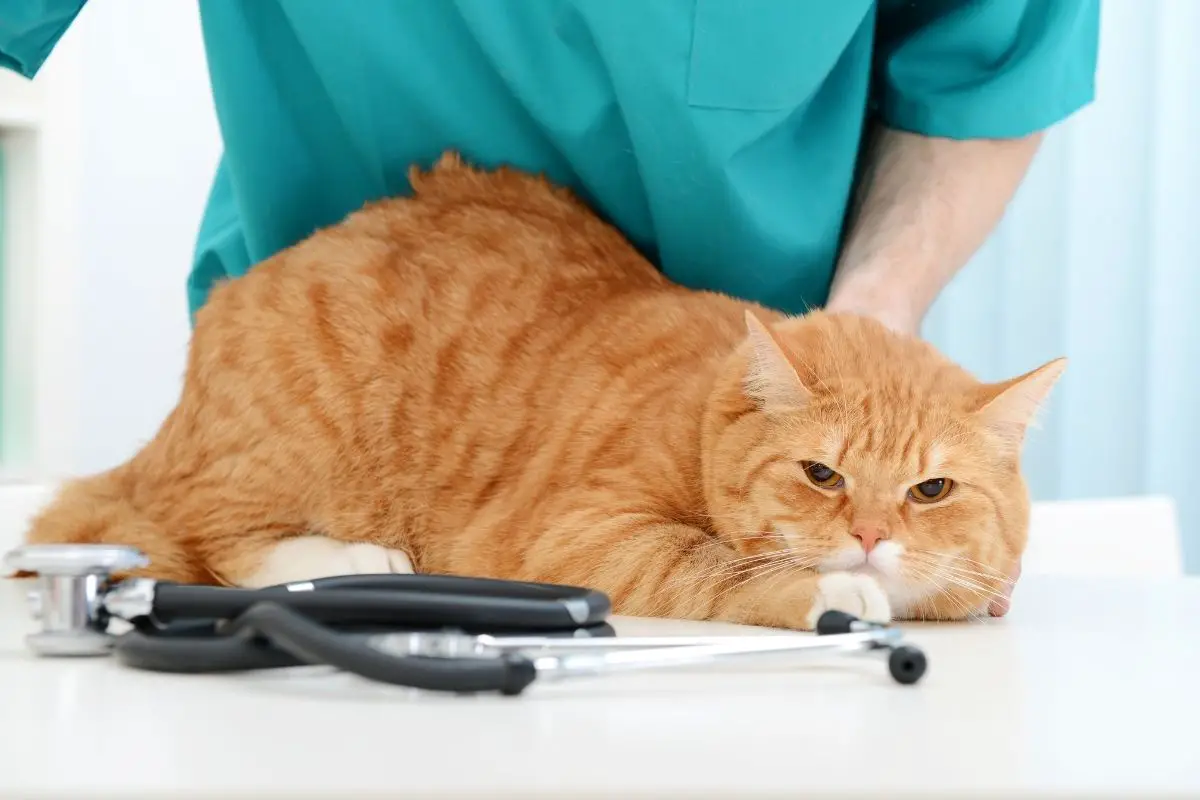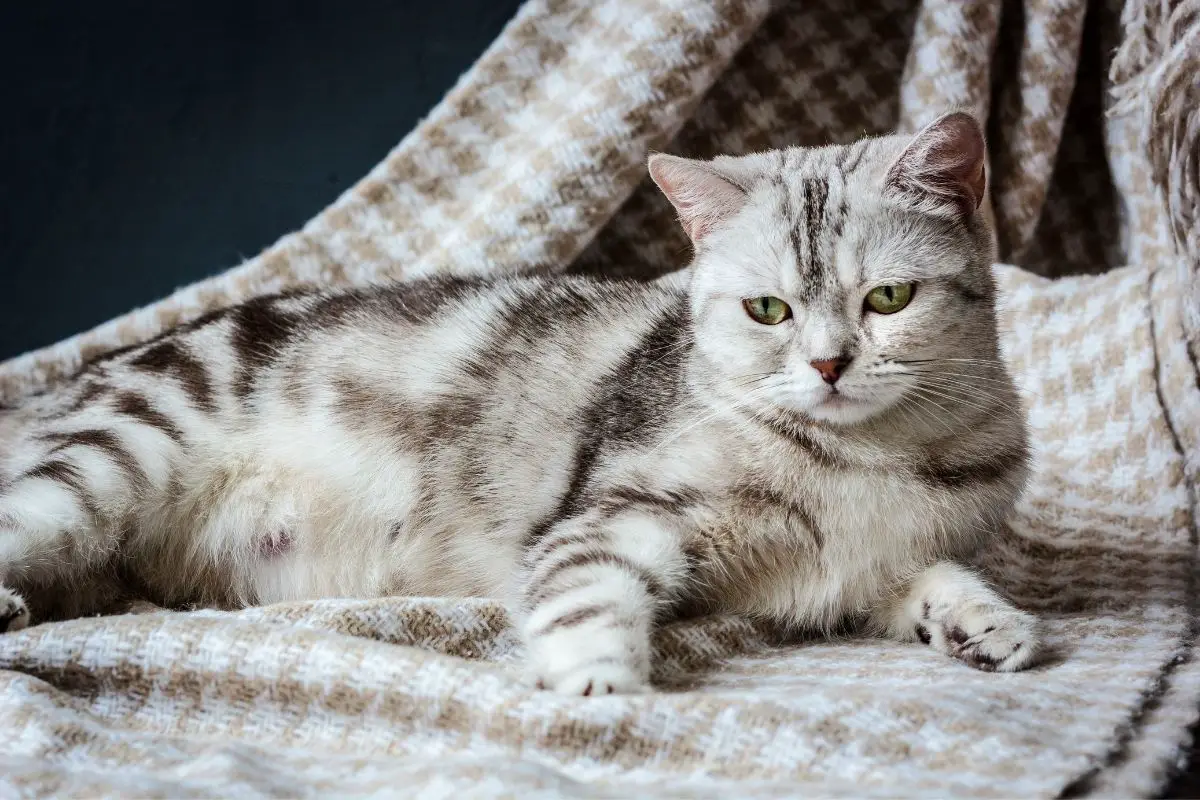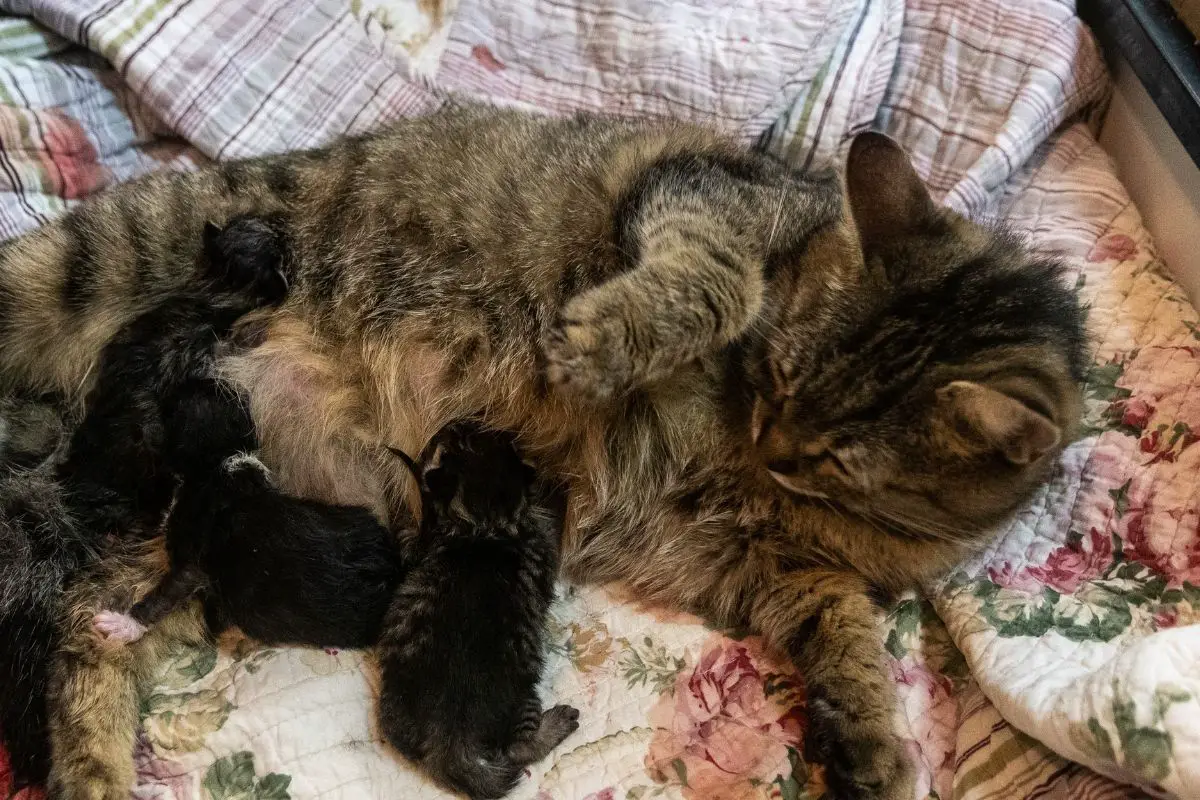Helping a cat to deliver its newborn kittens can certainly be an amazing sight to behold, but it can also be quite stressful, not only for the cat but also for you.
You want to ensure that every kitten is healthy and properly fed right after birth, but you also want to respect the cat’s boundaries and limits.
The best thing you can do as a cat is giving birth is to stay by its side and wait for the procedure to finish so that you can offer help when you can see that it is needed.
However, sometimes you may need to intervene, in order to ensure the safety of the cat and its kittens, and you will need to know the best ways to do exactly that so that you can do it safely while keeping yourself and the cat happy.
Many who have assisted in cat births have noted troubles with being able to tell whether the mother has finished delivering.
But “How Do You Know If Your Cat Still Has Kittens Inside?”
Luckily, we’re here to help you navigate this difficult situation so that you can be sure to make the right choice that benefits you and the cat’s safety.
Read on to find out all you need to know.
Contents
- 1 How Do You Know If Your Cat Still Has Kittens Inside?
- 2 What Should You Do If A Kitten Is Not Moving Inside The Mother? Will The Kitten Die?
- 3 What Does A StillBorn Kitten Signify?
- 4 How Can You Prevent Stillborn Kittens During Birth?
- 5 How Do You Help A Cat To Give Birth?
- 6 Frequently Asked Questions
- 7 To Conclude
How Do You Know If Your Cat Still Has Kittens Inside?
Cat births can vary quite massively in terms of their average length.
Generally, most cats give birth to litters of numerous kittens at one time, and thus it can be difficult to predict how long a cat’s birthing process may take.
Generally, the time between each kitten being born is around 10 to 60 minutes. The stage at which the kittens begin to be born can take anywhere between 6 to 12 hours, depending on how many babies there are to be delivered.
Generally, the birthing process will happen very naturally and very little intervention will be necessary to ensure a healthy birth.
The kittens will be able to naturally find their way out, and the mother will normally make it very clear if there are any particular issues that they are having.
This is why it is important to be patient and attentive as a cat gives birth, as they may or may not need help from moment to moment, and you do not want to intrude on their birthing process, which can be a very private process.
Generally, towards the end of labor, you should notice that the cat’s stomach begins to deflate, as the kittens will have been birthed.
At this point, the mother may begin to regain her energy, and will likely begin grooming her young. At this point, it is safe to assume that all of her kittens have been born.
The kittens may instantly begin feeding on their mother, so you may not have time to check her stomach, so make sure to give the mother plenty of time to recuperate after the long birthing process.
Once the mother has had some time alone with her young, put a hand lightly on its abdomen, and check to see if there is any movement.
If not, then it is very safe to assume that the mother has finished birthing all of its children.
If you do feel more movement, and it has been more than an hour since the last kitten was birthed, then there may be a problem.
Do not attempt to force the kitten out, no matter how far out of its mother it may be.
This could cause harm to the kitten and could be incredibly distressing to the cat. Instead, call your vet immediately to ask for advice.
It is likely that a very minor problem has caused the kitten to not be birthed properly, and this may be due to malposition, or a slightly oversized kitten.
Don’t worry if you are in this situation, the kitten can very easily be removed, but should be done at the hands of a professional.
What Should You Do If A Kitten Is Not Moving Inside The Mother? Will The Kitten Die?

If you lightly feel the abdomen of the mother cat and sense that there is something else there, but there is no movement, do not worry.
Unfortunately, in some cases, some kittens may die during the birthing process, or die while still in the mother’s womb.
Do not try to remove a dead kitten from the mother, as this will cause great distress to the mother, who is likely already dealing with a great deal of stress post-birth.
Your best course of action at this point is to call your vet and ask for advice.
Your vet will likely be able to help you through the process of carefully removing the fetus, depending on how far through the process it is.
If not, then the vet may instead ask you to visit them in person to have the fetus removed professionally. You should make sure not to do anything until a professional has advised you to.
If you can remove the dead fetus yourself, then you may want to place it near the mother, so that it can recognize that the kitten has passed.
This will help to ease the mother’s stress and will help them to focus adequately on their living newborns.
Make sure to also take time for yourself in such a situation. Dealing with a stillborn kitten can be incredibly distressing, especially given how vulnerable kittens are.
If you feel distressed by the death of a kitten, make sure to talk it through with someone you trust.
The kitten will need to be professionally removed, as it will begin to decompose, which can cause the mother to become very uncomfortable and very ill.
What Does A StillBorn Kitten Signify?
Though it is not the case every time, unfortunately, a stillborn kitten can be a sign of illness or infection within the mother.
In some cases, a stillborn kitten may occur simply because of an error during the birthing process or during the process of forming the kitten in the womb.
Unfortunately, this can happen in some cases regardless of how healthy the mother cat is.
There are also many viral infections and other illnesses that can cause stillborns to occur amongst cats.
Feline panleukopenia is a virus that has been known to infect unborn kittens while still in the womb.
This can either kill the kittens in the womb or cause cerebellar hypoplasia, which is what causes ‘wobbly cat syndrome’, a painless condition that affects the cat’s coordination abilities.
Many other viruses and bacteria may also cause kittens to die while still in the womb, which is why it is so important to stay on top of a cat’s health all throughout the birthing process, from conception to birth.
Make sure to take a pregnant cat for regular health checkups at your vet so that you can ensure there are no viral or bacterial infections that could affect the cat and its birthing process.
You should also make sure that your cat has received all of its vaccinations prior to birth, so as to prevent some of the worst infections from affecting the process.
How Can You Prevent Stillborn Kittens During Birth?
Unfortunately, it is not always possible to prevent stillborn kittens from occurring, as they can occasionally occur without much anticipation.
However, there are small things that you can make sure to do before and during the birthing process to help to lower the odds of a stillborn occurring.
As well as ensuring that your cat has received all of the appropriate vaccinations and that it is free of infections, it is also important to make sure that the cat has been adequately dewormed.
Deworming can be done through simple medications that can be given directly to your cat.
However, you should make sure that the deworming medications are safe to be taken by pregnant cats. Thus, you should make sure to contact your vet to discuss which deworming medications you should use.
In Utero, you should also ensure that the cat is fed an adequate diet that provides them with all of the vital nutrients that a cat needs.
This will allow them to form much healthier kittens, and will also help to bolster their immune system to keep their kittens safe inside.
Finally, you should also just make sure to take your cat regularly for vet checkups.
Aim to take your cat every two weeks to the vet so that they can verify that your cat is still healthy, that their kittens are forming well, and that the cat will be able to safely give birth.
How Do You Help A Cat To Give Birth?

Once your cat is ready to give birth, it will likely change in behavior just slightly. It will likely begin pacing around, as well as beginning its nesting behavior.
This behavior involves the cat creating a small secluded and comfortable area in which they can comfortably give birth in privacy.
You may find your cat hiding in small spots, such as under cupboards, under chairs, or under low tables.
The best thing to do once the nesting behaviors start up is to create a suitable nest for the cat.
Grab some comfortable and durable materials, such as blankets and newspaper and place them in the area that your cat seems to be gravitating towards.
You will know that your cat has taken to the nest, as it may lie down and begin to look rather relaxed.
Make sure to ensure that the cat will be able to stay in that position for a long period of time while remaining excluded and safe from other animals, harsh noise, or lots of foot traffic.
If your cat is nesting under a table, you may want to lightly drape a blanket over the table so that it hangs over the edges.
This helps to minimize stressful stimuli such as movement or changes in light so that your cat can remain calm and focus on delivering safely.
During the birthing process itself, keep a close eye on the cat so that you can check for signs of stress and discomfort.
Generally, each kitten should be delivered between 10 to 60 minutes after the last one, so make sure to keep a measure on the time too.
Make sure to give the cat plenty of space, and only intervene when it is totally necessary.
Generally, the cat birthing process will happen naturally, and you will not need to intervene yourself very often.
Trying to involve yourself too much with the process can cause more stress for the cat, and thus it is best to give it plenty of space.
Frequently Asked Questions
Can A Cat Give Birth Days Apart?
Cats actually can give birth days apart, though this is often very rare. If this does occur, make sure to call your vet to receive professional advice.
Can You Touch Newborn Kittens?
Most vets recommend that you do not touch the kittens during the birthing process if you can.
While their eyes are still closed, you should try to allow them to feel their way around alone. However, you can still check to see if they are healthy, which should usually be clear by just looking.
You can also see whether the mother is okay with you touching its young. A cat will definitely make it clear if you are not yet allowed.
Will A Mother Cat Abandon Her Kittens If You Touch Them?
No. This is a long-held rumor that holds no value. A mother will not simply reject its young just because you have touched it.
However, you should still try to limit your contact with the kittens so as not to cause them or the mother any stress.
To Conclude
So, there you have it. Checking to see whether your cat has finished giving birth is very easy.
First, check to see whether it has been more than sixty minutes since the last kitten was born, and then lightly place your hand on the cat’s abdomen.
If the abdomen feels empty, then the cat has finished delivering.
If you feel anything else in there that shows no signs of leaving, make sure to contact your vet for the best advice.
Now that you have learned “How Do You Know If Your Cat Still Has Kittens Inside?” Continue Reading our Other Articles about Cats



